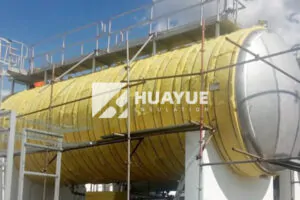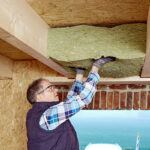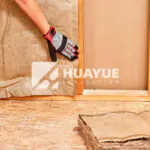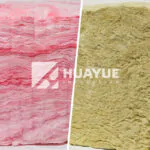Attic Insulation Fiberglass: Is It Still the Best Choice for Your Home?
If your energy bills keep climbing and your attic is always too hot or cold, it may be time to rethink your attic insulation strategy.
Fiberglass insulation remains one of the most popular and cost-efficient options for attics. It provides strong thermal resistance, is relatively easy to install, and is widely available in batts or loose-fill forms.
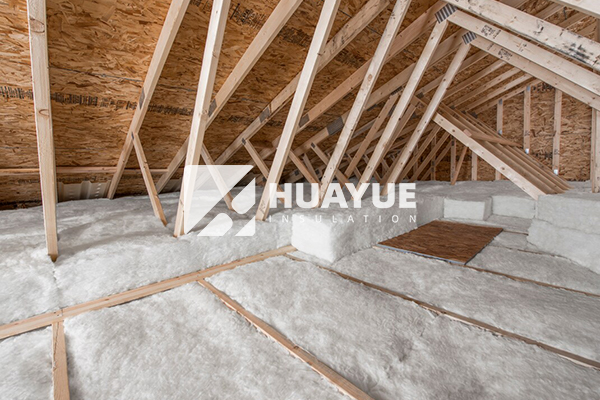
Many people choose fiberglass insulation because it is affordable and effective. But is it really the best material for attics today? I spent years working with different insulation products in many types of buildings. My experience tells me there is no one-size-fits-all answer, but there are strong reasons why fiberglass continues to be a top choice for attics. Let’s explore the topic in detail.
Is fiberglass insulation good for an attic?
You want your attic to be energy-efficient and safe, but you may worry if fiberglass insulation is really fit for the job.
When installed correctly, fiberglass insulation delivers excellent thermal performance in attics. It slows down heat flow, helps maintain even indoor temperatures, and can lower energy bills.

I have seen hundreds of attics where fiberglass insulation worked really well. This material resists heat flow because it traps tiny air pockets. During winter, the insulation keeps warm air inside. In summer, it blocks the heat from getting in. Properly installed fiberglass reduces the risk of ice dams in cold climates and helps keep attics cooler in hot weather. Fiberglass batts are easy for professionals to fit between attic joists. Loose-fill fiberglass is blown into place and fills gaps and corners. Here is a simple table showing the main benefits:
| Benefit | Description |
|---|---|
| Thermal Resistance | Helps regulate attic temperatures |
| Cost-Effective | Lower material and installation costs |
| Flexibility | Fits different attic shapes and sizes |
| Fire Resistant | Will not burn easily |
It’s important you pick the right R-value for your climate zone and ensure all gaps are covered during installation. If you follow best practices, fiberglass can be a great attic insulation solution.
Why is fiberglass wool used in attics?
Many people wonder why fiberglass wool is seen everywhere in attic insulation projects.
Fiberglass wool is widely used in attic insulation because it is lightweight, easy to handle, and offers good thermal properties at a reasonable cost.

I remember the first time I worked with fiberglass wool. Unlike heavier materials, it was simple to transport and cut. Workers finished installing it faster, which made projects cheaper for homeowners. Fiberglass wool is made from spun glass fibers, so it naturally resists fire and does not absorb water—two important attributes for attic safety and longevity. That’s why builders and homeowners choose it again and again. Here’s a breakdown of why it’s used so often:
Fiberglass Wool: Ideal for Attic Insulation
| Attribute | Reason for Use |
|---|---|
| Lightweight | Easy to install and handle |
| Cost Friendly | Keeps project budgets lower |
| Non-Absorbent | Reduces chance of mold and moisture issues |
| Fire Resistant | Adds safety and meets local fire codes |
| Readily Available | Easily sourced in many sizes and types |
Fiberglass wool also maintains its shape well, so it continues to insulate effectively over time. When attic spaces have irregular joist spacing or hard-to-reach areas, loose-fill fiberglass can fill those gaps where batts cannot fit.
What is the biggest problem with fiberglass insulation?
While fiberglass insulation has many strengths, it is not free of issues.
The biggest problem with fiberglass insulation is that it loses effectiveness if compressed, poorly installed, or if it gets wet, leading to reduced thermal performance and possible mold growth.
Many times during inspections, I found fiberglass batts squished under stored boxes or pushed aside for wiring and pipes. Each time this happens, those air pockets inside the fibers break down, and the insulation can’t do its job. Sometimes, attic leaks go unnoticed and saturate the fiberglass, making it nearly useless until dried or replaced. Let me break down the problems:
Main Issues with Fiberglass Insulation
| Issue | Effect | Solution |
|---|---|---|
| Compression | Lower R-Value | Keep insulation fluffy, don’t store items on top |
| Poor Fit | Creates gaps, loses heat | Install properly, fill all voids |
| Moisture Absorption | Mold risk, no insulation | Keep attic dry, fix leaks fast |
| Air Movement | Dust and fibers in home | Close gaps, use vapor barriers if needed |
Careful installation and regular inspections can prevent most problems. If the attic is prone to leaks or needs frequent repairs, consider using moisture-resistant products or additional vapor barriers with fiberglass wool.
Is fiberglass wool as bad as asbestos?
Some homeowners wonder if fiberglass is dangerous like asbestos.
Fiberglass wool is not as hazardous as asbestos. While inhaling fibers can irritate skin and respiratory systems, fiberglass is not officially classified as a carcinogen in normal use.
Over the years, I have spoken with many safety experts about this. Asbestos is a well-known hazard because its fibers can cause serious health problems over time when inhaled. Fiberglass, on the other hand, is regulated and tested for health effects. Modern fiberglass insulation is made to produce less airborne dust. With basic protective equipment during installation—like gloves, masks, and long sleeves—most risks can be reduced. After the insulation is in place, fibers are usually trapped inside walls or under attic floors and pose little threat to indoor air quality.
Comparing Fiberglass Wool and Asbestos
| Property | Asbestos | Fiberglass Wool |
|---|---|---|
| Main Risk | Cancer-causing | Skin, eye, and lung irritation on exposure |
| Regulation | Banned or restricted in most countries | Allowed, tested, regulated |
| Everyday Safety | Very hazardous if disturbed | Safe with simple precautions |
| Fiber Structure | Long, sharp, persistent | Short, breakable, settles quickly |
Homeowners shouldn’t panic about fiberglass insulation, but basic safety steps matter. In most cases, it remains a safe and modern option when used as recommended.
Conclusion
Fiberglass is still a reliable choice for attic insulation when installed with care and maintained properly.
You may also be interested in:
Ready to Get Started?
Get in touch with our experts for personalized solutions tailored to your needs.
Get Free QuoteLatest Articles
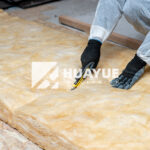
How to Cut Fiberglass Insulation Easily and Safely?
Nov 21, 2025
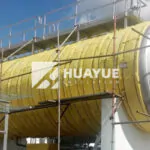
Does fiberglass insulation burn?
Nov 19, 2025
Let's Work Together
Ready to take your business to the next level? Get in touch with our team of experts and let's discuss how we can help you achieve your goals.
Get Free Solutions


